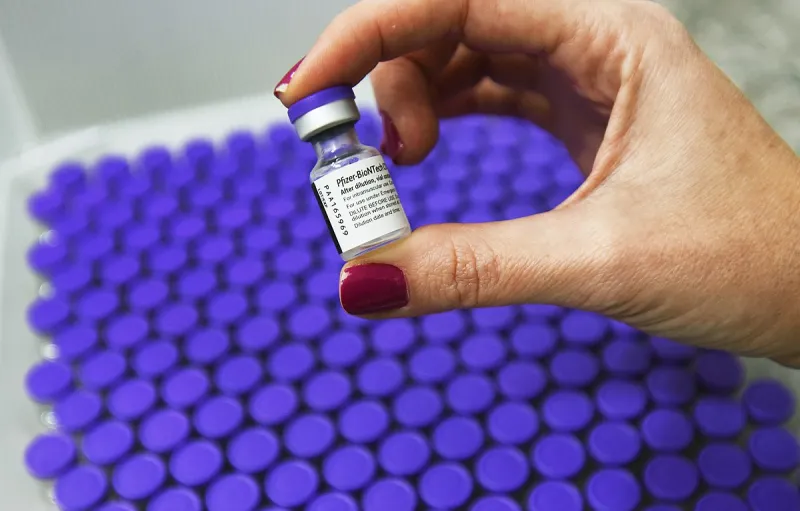Corona mRNA preparations from BioNTech Pfizer: limit values exceeded 500 times – study
Source: TKP.at, Dr Peter F. Mayer, 12 May 2024
It has been proven since spring 2023 that BioNTech Pfizer’s corona vaccines contain not only RNA, but also significant DNA impurities. Kevin McKernan had already published the first findings on the DNA content of the modRNA vaccines on February 16, 2023. The findings are serious because they inoculate spike genes that can multiply in the body and become lodged in our cells. Possible consequences include lifelong spike production, excretion of spike genes into the environment, and inheritance of the spike gene.
The pharmaceutical lobbyists in the European Medicine Agency (EMA) tried to downplay the importance and harmful potential of these contaminants. In response to a request to the EMA from TKP guest author Dr. Hans-Koachim Kremer, the regulatory authority responsible for the EU, explained:
The limit for residual DNA in Comirnaty drug batches… corresponds to <10 nanograms of DNA per adult dose (30 micrograms of RNA) of Comirnaty.
In the answer to the query, however, she denies that there are any excesses:
… the assumption that there is an “out of specification” situation… is not supported by the available scientific evidence.
Here the EMA remains true to its line: it does not provide any reference for this statement or access to the files and completely denies the circumstances.
Further up in the response letter, the EMA explains:
Residual DNA is tested using qPCR… in the active substance.
However, this is a useless method. Kremer cited the measurements from Prof. Brigitte König, Institute for Medical Microbiology and Infection Epidemiology, Medical Faculty University of Leipzig, which demonstrate massive exceedances.
The analysis and evaluation of the methods used and the results have now been published in a scientific publication. The study by Brigitte König et al is titled “Methodological Considerations Regarding the Quantification of DNA Impurities in the COVID-19 mRNA Vaccine Comirnaty”.
The results of the investigation are summarized as follows [emphasis mine]:
DNA contamination can affect the safety of genetically engineered drugs; Therefore, a certain limit must be set for them when they are approved. This is particularly true for mRNA vaccines, as large amounts of DNA templates are used to produce them. In addition, when quantifying the total DNA content in the final product, it should be noted that, in addition to the mRNA active ingredient, DNA impurities are also included in lipid nanoparticles and are therefore difficult to quantify. In fact, the manufacturer of the mRNA vaccine Comirnaty (BioNTech/Pfizer) only measures DNA impurities in the active ingredient using a quantitative polymerase chain reaction (qPCR), the DNA target sequence of which is less than almost 1% of the originally added DNA template. This means that no direct DNA quantification takes place and compliance with the limit value for DNA contamination is only estimated from the qPCR data using mathematical extrapolation methods. However, it is also possible to dissolve the lipid nanoparticles with a detergent in order to directly measure the DNA contamination in the final product using fluorescence spectroscopic methods. Experimental testing of this approach confirms that reliable values can be obtained in this way.
In the Conclusions chapter, the findings are summarized as follows [emphasis mine]:
The available information and data indicate that the ready-to-use mRNA vaccine Comirnaty contains DNA impurities that exceed the permissible limit by a hundred times, and in some cases even more than 500 times, and that this went unnoticed because the within the framework DNA quantification carried out during batch testing only at the active ingredient level when using qPCR, as explained above, appears to be methodologically inadequate. Due to the conditions during the production of Comirnaty’s mRNA active ingredient, the qPCR used is designed in such a way that a massive under-detection of DNA contamination appears to be the result. It should be noted that qPCR is unbeatable when it comes to quantifying specific DNA sequences, but not when it comes to quantifying the entire DNA content. However, DNA contamination in the Comirnaty concerns all DNA, regardless of what sequences it contains. Accordingly, it can be assumed that a fluorescence spectrometric measurement of the total DNA in the end product, analogous to the quantification of the mRNA active ingredient, which is carried out in the end product, is not associated with the risk of under-detection of DNA contamination, but rather provides reliable values and thus meets the required level of drug safety.
Against this background, the experimental testing of the total DNA contained in the ready-to-use diluted Comirnaty® vaccine by means of fluorescence spectrometric measurement, which is to be carried out by the authorities as part of the legal mandate for official batch testing, appears to be essential. Why this was systematically omitted by the European control laboratories according to the German Federal Government’s statements quoted above should therefore be the subject of extensive professional discussions and considerations.
It should also be taken into account that DNA impurities in Comirnaty® are apparently integrated into the lipid nanoparticles and are therefore transported directly into the cells of a vaccinated person, like the mRNA active ingredient. What this means for the safety risks, particularly the possible integration of this DNA into the human genome, i.e. the risk of insertional mutagenesis, should be a second focus of the necessary discussion, which must go well beyond what occurred years before the so unexpected introduction of mRNA -Pharmaceuticals on the world market could have been considered.
Finally, the definition of DNA, which shows why these impurities are so important and harmful: Deoxyribonucleic acid, or DNA for short, is a macromolecule arranged in the form of a double helix and made up of 4 different deoxyribonucleotides. DNA contains the genes that encode the structure of all proteins and therefore contain almost all the information necessary for cell function.
Suggest a correction





